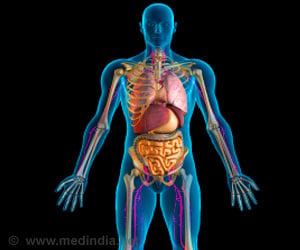Skin fibrosis occurs in cancer patients undergoing radiotherapy due to deposition of excess extracellular matrix. This can be curbed by regulating metabolism by targeting with new drugs and cell therapies.
- Skin fibrosis occurs in cancer patients as a complication of radiotherapy
- This arises from the deposition of excessive extracellular matrix (ECM), due to disruption of metabolism
- Deposition of ECM can be decreased by targeting metabolism with new drugs and cell therapies, thereby curbing treatment-related fibrosis
The research has been published in Nature Metabolism, a constituent of the prestigious Nature Group of journals.
Read More..
What is Fibrosis?
Fibrosis is the accumulation of fibrous connective tissue in an organ or other tissue, occurring due to repairing or reactive processes. Fibrosis can also occur as a result of pathological processes. When fibrosis occurs due to injury, it results in scarring. When it arises from a single cell-line, it is termed as a fibroma.The pathogenesis of fibrosis occurs due to the deposition of connective tissue and extracellular matrix (ECM). This is brought about by the activation of specialized cells called fibroblasts, which are responsible for laying down the connective tissue, including glycosaminoglycans and collagen. This deposition can interfere or completely disrupt the structure and function of the underlying tissues.
What was the Aim of the Study?
The aim of the study was to develop therapies that could prevent skin fibrosis in cancer patients undergoing radiotherapy. In this regard, Zhao, the lead author of the study, indicated that the researchers were looking for a way to reduce radiation-induced fibrosis. This condition occurs in cancer patients undergoing radiation therapy, where normal tissue becomes thickened, producing pain and impairment of function. The root cause of the problem is the excessive accumulation of ECM, which provides support for all tissues. Importantly, there is currently no effective treatment for reducing the accumulation of this fibrous tissue.What Did the Study Find?
The team analyzed fibrotic tissue samples from patients undergoing radiotherapy, as well as data from laboratory-based pre-clinical studies, in order to pinpoint metabolic pathways that are responsible for the pathogenesis and progression of fibrosis.Zhao says: “We were surprised to see that metabolic abnormalities were predominant and consistently found in patients with skin fibrosis, even years after their original radiotherapy. Our question was: ‘Can we manipulate metabolism to reduce fibrosis?’”
What are the Study Implications?
Regulation of metabolism can alter cell behavior as well as affect the accumulation and/or degradation of ECM. This metabolic model for the regulation of ECM has led to the development of new drug molecules and cell therapies that target metabolic processes.Testing in pre-clinical models of fibrosis has been carried out with these potential new therapeutic approaches. These could be used in the future for the modulation of metabolic processes to potentially prevent the onset and progression of fibrosis.
In this regard, Zhao says: “We’re highlighting fibrosis from this new perspective, thereby opening the door to metabolic regulation as a way to treat this side-effect of radiation.”
Funding Source
The research was funded by many organizations, including the Canadian Institutes of Health Research, the Canadian Cancer Society Research Institute, the Physicians Services Incorporated Foundation, and the Princess Margaret Cancer Foundation, to name a few.Reference:
- Metabolic regulation of dermal fibroblasts contributes to skin extracellular matrix homeostasis and fibrosis - (https://doi.org/10.1038/s42255-018-0008-5)
Source-Medindia
















